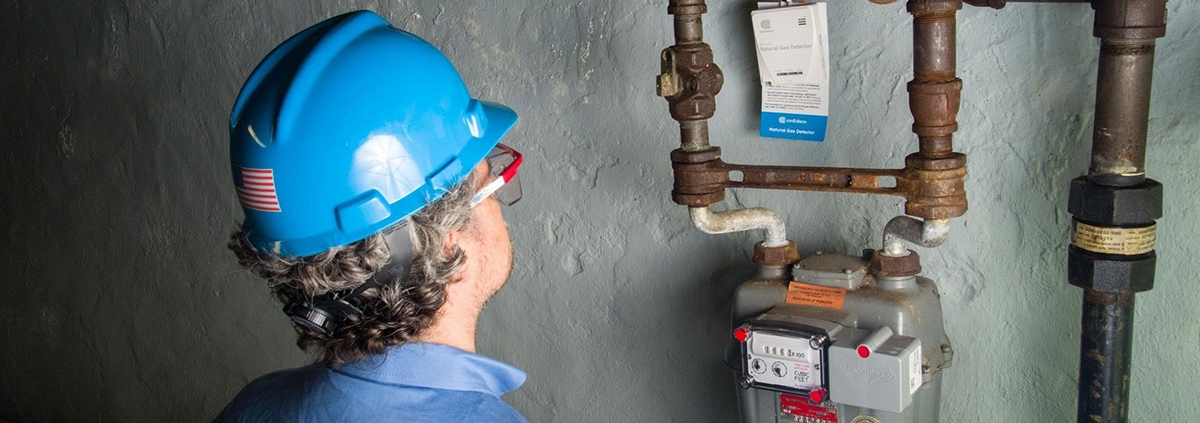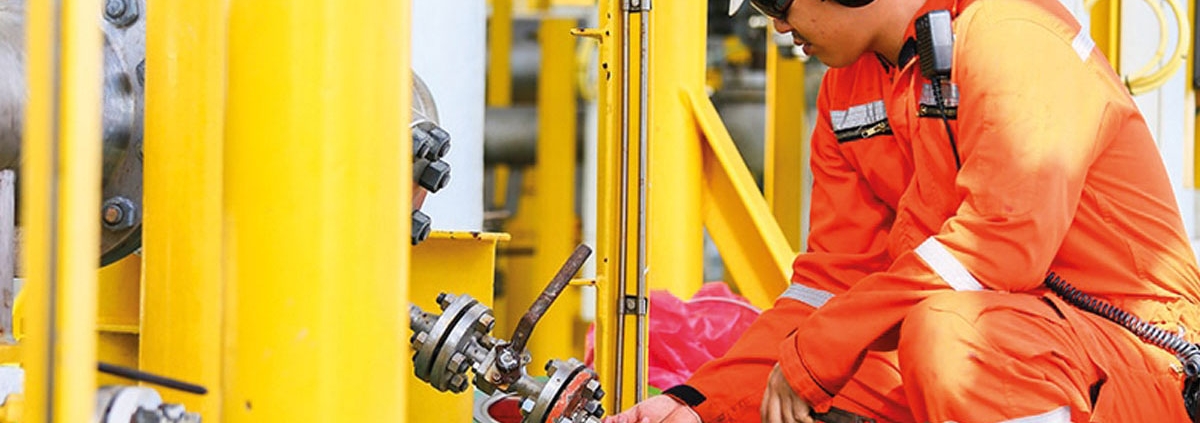Operated devices used for safety purposes. They are manufactured as portable or stationary (fixed) units and work by signifying high levels of gases through a series of audible or visible indicators, such as alarms, lights or a combination of signals. While many of the older, standard gas detector units were originally fabricated to detect one gas, modern multifunctional or multi-gas devices are capable of detecting several gases at once. Some detectors may be utilized as individual units to monitor small workspace areas, or units can be combined or linked together to create a protection system.
As detectors measure a specified gas concentration, the sensor response serves as the reference point or scale. When the sensors response surpasses a certain pre-set level, an alarm will activate to warn the user. There are various types of detectors available and the majority serves the same function: to monitor and warn of a dangerous gas level. However, when considering what type of detector to install, it is helpful to consider the different sensor technologies.
Gas Detector Technologies
Gas detectors are categorized by the type of gas they detect: combustible or toxic. Within this broad categorization, they are further defined by the technology they use: catalytic and infrared sensors detect combustible gases and electrochemical and metal oxide semiconductor technologies generally detect toxic gases.
Measurement of Toxic Gases
Electrochemical sensors or cells are most commonly used in the detection of toxic gases like carbon monoxide, chlorine and nitrogen oxides. They function via electrodes signals when a gas is detected. Generally, these types of detectors are highly sensitive and give off warning signals via electrical currents. Various manufacturers produce these detectors with a digital display.
Metal Oxide Semiconductors, or MOS, are also used for detecting toxic gases (commonly carbon monoxide) and work via a gas sensitive film that is composed of tin or tungsten oxides. The sensitive film reacts with gases, triggering the device when toxic levels are present. Generally, metal oxide sensors are considered efficient due their ability to operate in low-humidity ranges. In addition, they are able to detect a range of gases, including combustibles.
Measurement of Combustible Gases
Catalytic sensors represent a large number of gas detector devices that are manufactured today. This technology is used to detect combustible gases such as hydrocarbon, and works via catalytic oxidation. The sensors of this type of detector are typically constructed from a platinum treated wire coil. As a combustible gas comes into contact with the catalytic surface, it is oxidized and the wiring resistance is changed by heat that is released. A bridge circuit is typically used to indicate the resistance change.
Infrared sensors or IR detectors work via a system of transmitters and receivers to detect combustible gases, specifically hydrocarbon vapors. Typically, the transmitters are light sources and receivers are light detectors. If a gas is present in the optical path, it will interfere with the power of the light transmission between the transmitter and receiver. The altered state of light determines if and what type of gas is present.
Common Gas Detector Applications
Although detectors are an essential application for home and commercial safety, they are also employed in numerous industrial industries. Gas detectors are used in welding shops to detect combustibles and toxics and in nuclear plants, to detect combustibles. They are also commonly used to detect hazardous vapors in wastewater treatment plants.
Gas detectors are very efficient in confined spaces where there is no continuous employee occupancy. Such spaces include tanks, pits, vessels and storage bins. Detectors may also be placed at a site to detect toxins prior to occupant entry.
Additional Gas Detector Information:
Although gas detectors are generally a reliable technology, with some models capable of lasting up to five years, their proper function is generally dependent on user maintenance, battery inspection and calibration. Calibration is a safety procedure executed to ensure that detectors are measuring the correct level of gas. In addition, the life-span of gas detectors also often depends on the amount of gas vapors to which they are exposed. Contaminated sensors may not register dangerous gas levels, which is why frequent calibration is essential.
1. The accuracy of the detectors is an important precondition for alarm when the toxic gas or flammable gas concentration reach the alarm point in the detection. Correct and timely is the guarantee of the personal and production safety.
2. The accuracy of the detectors depends on the sensors. While the electrochemical sensors used to measure toxic gases such as carbon monoxide and hydrogen sulfide are not worn out or consumed by exposure to CO or H2S, they still eventually need to be replaced when they are no longer able to detect gas. Although CO and H2S sensors may last for years without significant loss of sensitivity, the loss of sensitivity at the end of life may be sudden. Incidental exposure to other substances also may reduce sensitivity. For instance, many electrochemical sensors can be permanently affected by exposure to organic solvents and alcohols. Exposure to methanol is well known to affect the performance of CO and H2S sensors.
3. At moment, all the gas detectors haven’t been able to get rid of the relative measurements. Because of this, the device need timely maintenance and calibration. Only under the correct guidance of the manufactures, the accuracy of the test results can be guaranteed.
4. To guarantee the detection error is not exceeded in normal range, it’s necessary to do calibration frequently. Just like our watch, we will make calibration to ensure the time accuracy. Hence, the gas detectors accuracy is much more important when the detection results involve the safety of human life.
In a word, whether the device is used or not, or if it’s good use or not, it’s better to do calibration regularly to make sure the minimum results error and high accuracy
Therefore, we suggest to check the device with calibration gas before usage to make sure the gas detectors have the real protection function.
How VOC Meter Detects Compounds
To detect dangerous compounds, these detectors rely on PID photoionization. One of the newest and most accurate technologies available today, this process can ionize molecules using ultraviolet light, and then measure the electron levels and their flow. In doing so, they can detect various combinations of toxic and combustible gases, allowing them to be used in multiple types of industrial environments.
Programmable Controls
To ensure volatile organic compounds are detected as quickly as possible, VOC monitors are now equipped with programmable controls that virtually eliminate false alarms and allow for strict security parameters to be maintained when calibrating the detectors. Since only select management personnel and emergency workers are usually authorized to change calibration settings, these controls ensure the detectors will produce accurate results.
Optional Alarm Relays
Considered one of the biggest technological advances in VOC detection, optional alarm relays allow sensors to be equipped with light, horns, vibration, and other warning systems that can help employees learn of impending danger.
A Safer Workplace
Since workers in numerous industrial facilities work around cleaning products, paints, and other solvents on a daily basis, it’s important to have detection systems in place that are reliable and accurate. With the many technological advances such as optional alarm relays, programmable controls, and photoionization, it has become much easier to make factories, processing plants, drilling platforms, and other areas much safer. If you have additional questions about how these detectors can keep your workplace safe, contact a consultant at Unitec. By being able to speak with a qualified industry professional, you will have your questions answered and be able to make the best decision for your company.
Statement: Part of the information in the article is coming from technology articles, In case of infringement, pls contact me to delete it.



